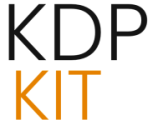Amazon’s AI Leap: Decoding the Author Experience and Industry Impact of Kindle Translate

The self-publishing landscape underwent a significant technological realignment in November 2025 with Amazon’s official beta launch of Kindle Translate, an artificial intelligence-powered service designed to instantly localize Kindle Direct Publishing (KDP) titles. Announced in early November 2025, this service directly addresses the long-standing chasm where less than five percent of titles on Amazon.com were available in more than one language, positioning AI as the potential key to unlocking genuine global market penetration for independent authors. This article details the operational mechanics, grapples with the quality dilemma inherent in machine translation, analyzes the economic implications, and surveys the immediate industry reaction to Amazon’s latest proprietary publishing tool.
The Author Experience and Operational Timeline
The practical application of Kindle Translate involves a clear, multi-step process managed entirely by the author from their existing KDP dashboard. This smooth sequence of actions is designed to minimize the learning curve and maximize the speed at which a new language edition can be brought to market, a stark contrast to the protracted negotiations and lead times associated with conventional international publishing deals.
Managing Translations on the Centralized KDP Portal
Once an author decides to proceed with a translated edition, the management of this process is consolidated within the KDP interface. The portal serves as the command center where the author initiates the request for translation, which involves selecting the desired target language from the currently available options. Beyond simply activating the translation engine, the author retains essential commercial control over the new edition. This includes the ability to precisely define the list price for the translated version, allowing for regional price adjustments based on market expectations or purchasing power parity, separate from the original edition’s pricing structure. This granularity in pricing strategy is a significant capability that allows authors to optimize their earnings across different territories from day one. The system leverages the core KDP architecture, integrating the new feature directly into the existing upload and management workflow to ensure author familiarity.
Expedited Publishing Cycle and Availability Estimates
One of the most compelling aspects of the service, particularly for authors accustomed to the slow churn of international rights, is the promised velocity of the publishing pipeline. Once the author has made their selections and authorized the translation process—and assuming they opt for automatic publication—Amazon suggests that the fully formatted, localized ebook can be available for purchase and download on the digital store in a remarkably short timeframe. The reported estimate for this transition from initiation to availability is a matter of just a few days. This rapid turnaround effectively compresses what could be a months-long, multi-vendor project into a matter of seventy-two hours or so, fundamentally altering the economic calculus for testing new international markets with minimal lead time or commitment.
Quality Assurance and the Nuance Dilemma in Machine Translation
Despite the undeniable promise of speed and cost savings, the introduction of any large-scale, raw machine translation tool into the high-stakes environment of published literature inevitably raises profound questions about textual fidelity, cultural appropriateness, and narrative nuance. The publishing world has long recognized that translation is an art form involving interpretation, cultural context, and emotional resonance—qualities that are notoriously difficult for current artificial intelligence models to fully replicate.
Amazon’s Automatic Accuracy Evaluation Protocol
In an effort to address these inherent risks, Amazon has incorporated a pre-publication quality check into the Kindle Translate process. The company asserts that all translations generated by the AI are subjected to an automatic evaluation for accuracy prior to being listed for sale. While the exact methodology behind this proprietary validation process remains undisclosed, the statement serves as a reassurance to authors and readers alike that the output is not entirely unchecked. However, the specific criteria for this “automatic evaluation” are not public, leaving open the question of whether it assesses grammatical correctness, cultural context, or mere semantic equivalence. Furthermore, this automatic check is supplemented by an option for the author to manually preview the completed translation.
The Critical Role of Human Post-Editing for Literary Integrity
The utility of the author’s preview feature is directly contingent upon the author’s own fluency in the target language, a reality that has not been lost on industry commentators. For an author who is monolingual in the source language, the ability to preview a Spanish or German output offers limited practical value for ensuring high-quality conveyance of their artistic intent. This reality creates a distinct opportunity for a new service tier: the expert review of raw machine translation output, often referred to as post-editing. For a work to achieve a standard of quality comparable to a human translation, especially in genres reliant on voice and subtlety like literary fiction or complex non-fiction, engaging a human professional to refine the AI’s draft becomes necessary. This hybrid approach—leveraging AI for speed and humans for polish—presents itself as a potential middle ground, yet it still involves an extra layer of cost and time that the base Kindle Translate service was intended to circumvent entirely. The technology, therefore, does not entirely eliminate the need for linguistic expertise in ensuring a truly excellent reader experience, a point echoed by general industry analysis in 2025 which highlights that human oversight remains critical for nuanced content.
Economic Implications and the Free Beta Period
The financial aspect of any new publishing tool is paramount, especially for the independent author community, which is inherently sensitive to overhead costs and royalty structures. The current economic proposition of Kindle Translate is heavily skewed in favor of adoption due to its introductory pricing structure, though this is tempered by significant future uncertainties.
The Immediate Advantage of Zero-Cost Localization During Testing
During this initial beta testing phase, which began in November 2025, the service is being offered to participating authors completely free of charge. This free access represents an extraordinary incentive for authors to experiment with foreign markets, effectively eliminating the major initial capital outlay that translation traditionally demands. For authors who previously cited cost as the primary impediment to international expansion, this introductory period removes the risk associated with sunk costs, allowing them to test the waters in new linguistic territories without any direct financial investment beyond their time spent managing the process. This zero-cost entry point is a powerful driver for the rapid onboarding of content into the system during the testing window. Early adopters have characterized the service as a long-awaited, cost-effective solution to a persistent barrier to global reach.
Unclear Post-Beta Pricing Models and Investment Risk Assessment
A significant point of contention and a major unanswered question revolves around the financial terms that will apply once the beta program concludes and the service is rolled out to the wider KDP community. Amazon has reportedly withheld details concerning the post-beta pricing structure. This ambiguity creates a risk for authors who might invest substantial time into translating their backlist during the free period, only to find the ongoing operational cost makes it economically unviable compared to the expense of traditional human translation, which often falls in the range of ten to twenty-five cents per word. Authors and industry analysts are closely scrutinizing whether the eventual cost structure will be a subscription, a per-word fee, or perhaps a revenue share model, all of which fundamentally alter the return on investment calculation for multilingual publishing. The necessity of disclosing AI-generated content, including translations, under KDP guidelines adds another layer of procedural complexity that must be factored into the unknown cost structure.
Platform Integration and Readership Dynamics
The success of Kindle Translate is not solely dependent on author adoption; it also hinges on how the platform integrates the translated works into the reader experience and how these new editions interact with Amazon’s proprietary promotional and subscription services.
Visibility and Labeling for Consumers of AI-Translated Content
To ensure transparency with the readership, translated editions created via the service will carry a distinct identifier. These books will be clearly marked as “Kindle Translate” titles on the Amazon store, serving as an immediate signal to the consumer regarding the origin of the text. This labeling is widely viewed as an essential ethical measure, allowing readers to make informed purchasing decisions based on their preference for human-translated versus AI-generated content. Furthermore, readers will be provided with an option to preview sample sections of the translation before committing to a purchase, offering a direct quality checkpoint before the transaction is finalized.
Maximizing Discovery via KDP Select and Kindle Unlimited Enrollment
A substantial benefit for authors utilizing Kindle Translate is the eligibility of the new editions to be enrolled in Amazon’s key promotional programs. This means that AI-translated versions can be enrolled in KDP Select, the program that mandates a period of digital exclusivity to Amazon in exchange for promotional benefits. Critically, this eligibility extends to inclusion within the Kindle Unlimited subscription service. For authors seeking discovery, especially in new international markets, placement within Kindle Unlimited can significantly increase visibility and initial readership, acting as a powerful engine to accelerate the adoption and review base for the translated work within a specific territory. This integration into the core KDP marketing engine makes the service highly attractive despite the quality caveats.
Industry Reception and Competitive Market Positioning
The introduction of a major platform like Amazon into the AI translation space has naturally generated a polarized reaction across the broader literary and localization industries. This reaction spans from enthusiastic endorsement of the technology’s potential to deep-seated skepticism regarding its impact on the craft of translation.
Voices of Optimism Regarding Expanded Revenue Streams
Many independent authors, particularly those already established in the English-speaking sphere, have expressed strong positive sentiment, viewing Kindle Translate as a long-awaited breakthrough. For these creators, the service represents a cost-effective, trustworthy solution that finally makes genuine global market penetration attainable, a feat previously reserved for traditionally published authors or those with substantial personal capital. Quotes from early adopters suggest that foreign translations are seen as opening doors to entirely new readerships and effectively granting their established titles a “second life” in new linguistic environments, directly correlating this technological access with expanded reach and increased overall revenue. This mirrors the broader 2025 trend where AI integration is seen as a strategic imperative for reaching new audiences and unlocking revenue streams in the localization market.
Concerns Over Quality Divergence and Market Saturation
Conversely, the move has been met with significant debate within the established translation community and among industry observers wary of the unvetted introduction of machine-generated text into the literary canon. The primary concern centers on the loss of cultural nuance, idiomatic correctness, and the author’s unique narrative voice—elements that bots are still ill-equipped to handle consistently. While Amazon evaluates for accuracy, the potential for subtle but damaging “hallucinations”—where the AI fabricates nonsensical or contextually inappropriate passages—remains a real threat to reader trust. Furthermore, the success of this tool positions Amazon in direct competition with specialized third-party AI translation platforms and newer, dedicated AI fiction translation companies that have recently entered the market. The ensuing market fragmentation and the lowering of quality barriers, a recognized challenge in the broader AI translation space, are subjects of ongoing industry discussion.
Future Trajectories and Unresolved Legal and Policy Questions
As with any major platform feature introduced in a beta capacity, the long-term success and ethical framework of Kindle Translate will depend on how Amazon addresses the roadmap for expansion and resolves several lingering policy ambiguities that impact author rights and business planning.
Speculation on Future Language Support and Feature Roadmaps
While the initial focus on English, Spanish, and German provides a solid starting point, the clear commitment to adding more languages is the next expected milestone. The direction of this expansion will likely be dictated by sales data gathered during the beta, prioritizing markets that show the highest engagement with the initial translated titles. Beyond mere language additions, the industry is closely watching for the integration of this AI capability into other Amazon publishing verticals, such as the recent announcements regarding Audible’s own exploration of end-to-end AI production technology, which includes translation and narration. This suggests a holistic, cross-platform strategy for AI deployment in content creation, reflecting a wider industry trend toward “Translation-as-a-Feature” (TaaF) integration in content systems.
Ambiguities Surrounding Royalty Structures and Intellectual Property Rights
Perhaps the most critical areas for long-term author commitment are the unresolved contractual and financial details. Firstly, the royalty structure for AI-translated editions remains opaque; it is unclear whether these new works will maintain the original 35% or 70% royalty rates common to KDP, or if Amazon intends to implement a different, potentially lower, rate to account for the reduced cost of creation. Secondly, the question of ownership over the AI-generated translation itself is not explicitly addressed in the publicly available terms. Standard KDP agreements grant Amazon a nonexclusive, irrevocable license for distribution, but the status of the AI-created text—as either belonging solely to the author or as a derivative work whose rights are subject to special licensing terms—is a crucial legal detail that must be clarified before authors fully commit their intellectual assets to the system. Furthermore, KDP’s existing guidelines mandate that authors must disclose *AI-generated* content, which includes translations, meaning authors are taking on the responsibility of verifying that the AI output, which they may not fully understand due to lack of fluency, adheres to all intellectual property laws. Resolving these issues will be key to establishing long-term trust and ensuring sustainable, fair compensation for authors utilizing this powerful new technological frontier.









